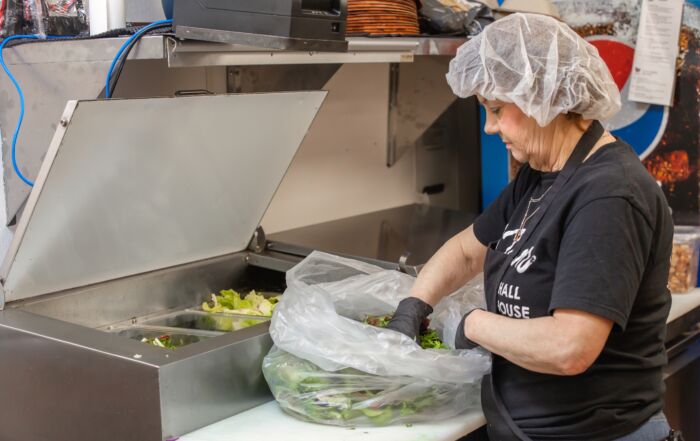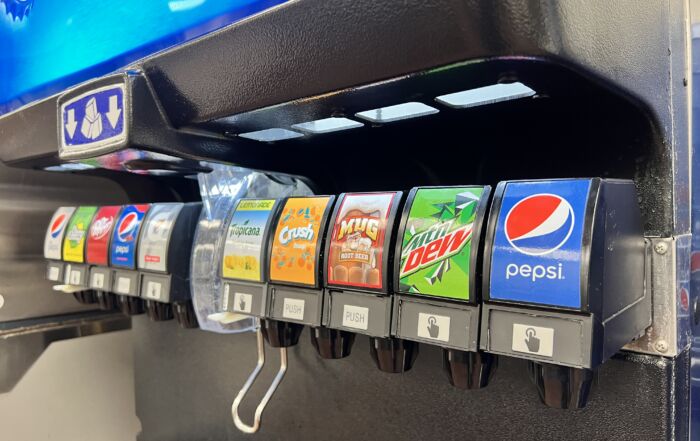Be Prepared—Norovirus Clean-Up Procedures
We are used to daily cleaning and sanitizing procedures, but norovirus clean-up is very different so it is important to be prepared. You should use these procedures if a norovirus outbreak occurs in your operation or if there is any vomiting event. You might be asking how do you know that norovirus was the cause of a vomiting incident. Well, at the time it occurs you won’t know. So the appropriate action is to assume that all vomiting may be caused by norovirus and clean it up as if it were. It is always better to err on the side of caution.
Have a Body Fluid Clean-Up Kit on Hand
Many of your food distributors are now offering clean-up kits for sale. You can purchase one of these or you can assemble your own kit and have it available for immediate use. If you are putting your own kit together, here is what you need:
- Standard Operating Procedure (SOP). The 2017 FDA Food Code states that “A food establishment shall have written procedures for employees to follow when responding to vomiting or diarrheal events that involve the discharge of vomitus or fecal matter onto surfaces in the food establishment. The procedures shall address the specific actions employees must take to minimize the spread of contamination and the exposure of employees, consumers, food, and surfaces to vomitus or fecal matter.” That is the official wording—but remember that SOP’s include the why, who, what, how, and when to do something.
- Personal Protective Equipment (PPE). PPE are items designed to protect the individual doing the clean-up from contamination. For each kit, include:
- Four pairs of disposable, nonabsorbent, medical-grade gloves
- One facemask with face shield or goggles
- One pair of shoe covers
- One disposable gown
- Cleaning Supplies.
- Disposable paper towels—you will need to have an adequate supply on hand. Remember, you want to use disposable supplies because the waste is hazardous.
- Cleaning bucket and chemical spray bottle
- Disposable mop head
- Garbage bags with twist ties
- Optional—you may want to have a dustpan or scoop and an absorbent material such as sand, cat litter, or a commercial absorbent powder to make clean-up easier.
- As we have discussed, disinfecting is very different than sanitizing so the typical sanitizers that we use in foodservice can NOT be used. To give an example, in foodservice we use 50-100 ppm of chlorine for sanitizing. For norovirus clean-up it is 5000 ppm. Using a 5.25% concentration chlorine bleach, mix 1 2/3 cups bleach to 1 gallon of water—now that is a strong solution! For a list of EPA-registered antimicrobial products that are effective for norovirus, visit the EPA website: https://www.epa.gov/sites/production/files/2018-04/documents/list_g_disinfectant_list_3_15_18.pdf
How to Use the Body Fluid Clean-Up Kit
Now you have an incident—someone vomited in the dining room—and you have to clean it up. Don’t forget that droplets of vomit become airborne and can spread up to 25 feet, so you must clean up the 25 foot radius around the incident. Here are the steps to follow:
- Put on the Personal Protective Equipment—use all items—shoe covers, gown, face mask or goggles, and disposable gloves.
- Contain the waste. Cover the waste with paper towels or with the cat litter or commercial absorbent powder.
- Disinfect the area. Prepare the antimicrobial agent. Using the spray bottle, saturate the area and the additional 25-foot radius. If you are in a serving area, dispose of all food and supplies (such as napkins, condiment packets, etc.). Spray food contact surfaces.
- Remove the solid waste and absorbent materials used. Place that in a disposable trash bag and tie. Clean the area with disposable paper towels and mop head. Be careful not to splash the contaminated water from the mop bucket.
- Put on new gloves after carefully washing hands using proper handwashing procedures.
- Reapply the antimicrobial product to the clean area. Follow the manufacturer’s instructions for contact time to ensure proper disinfecting. Keep the area well ventilated—remember the high concentration required.
- Clean any non-disposable tools using the antimicrobial product. Dispose of everything possible. Check with your administrators or managers about where to dispose of the contaminated waste.
- Wash thoroughly. Wash your hands, exposed arms, and face with a germicidal soap. If possible, put on clean clothes and wash your clothes in hot water using the longest cycle. Dry the clothes using the hottest dryer cycle available.
- Clean and sanitize all food contact surfaces within the 25 foot radius. Normal operations can continue after that has been done.
- Replenish your Clean-Up Kit. Hopefully, there will not be another vomiting event but you have to be ready just in case.
This really illustrates the virulence of norovirus and the importance of thoroughly cleaning up after any vomiting incident. You can use this information to develop a written plan for your operation and to train employees on steps to take. While at Iowa State, Cathy worked with the Iowa Department of Inspections and Appeals to develop a written SOP that can be accessed at https://www.extension.iastate.edu/foodsafety/SOP-restaurant#facility. Once you have a plan drafted, check with your local health department. Having a written SOP and conducting training with employees might also reinforce your employee health policies when employees can see the impact of working when having vomiting and diarrhea. Be prepared—Risk Nothing!
Safely Shopping at Farmers’ Markets: A Food Safety Guide for Foodservice Operators and Chefs
Farmers’ markets are an appealing source of fresh, local, and seasonal ingredients for individuals and [...]
Ice Machines, Beverage Dispensers & Other Overlooked Food Safety Hazards
At the end of the spring semester in our campus food production lab, we’re fortunate [...]
What Foodservice Professionals Need to Know about the FDA Milk Testing Changes
In late-April and early-May 2025, headlines across the country and several social media posts stirred [...]
Before They Arrive: Your Health Inspection Prep List
A few weeks ago, I welcomed our local health inspector into a class I was [...]











